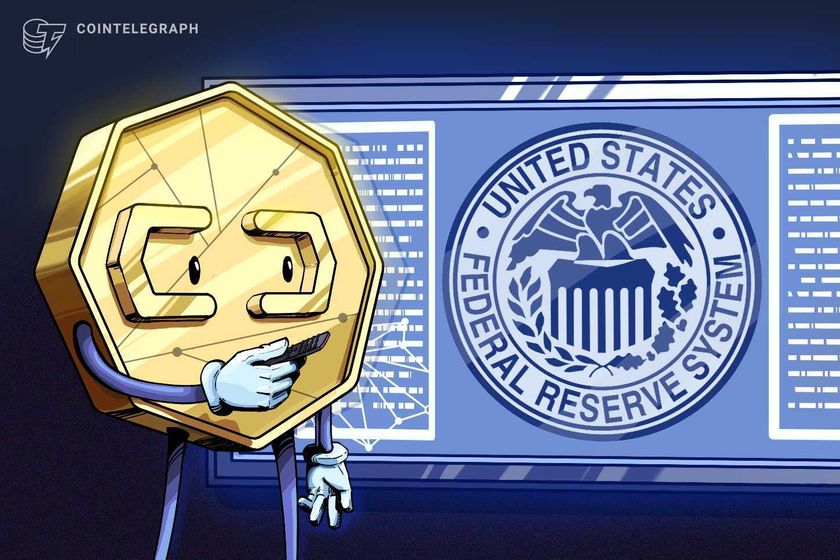USDD launches natively on Ethereum with up to 12% APY airdrop and upcoming savings-focused sUSDD
After expanding to Ethereum with audited contracts and an airdrop campaign offering up to 12% APY, USDD sets its sights on sUSDD — a savings-focused token built for transparent, on-chain growth.
Stablecoins have outgrown their early role as a trading convenience and are now shaping the future of international finance. By mid-2025, dollar-pegged stablecoins accounted for most of a market worth around $260 billion. The two largest stablecoins see quarterly volumes above $400 billion, and their use is growing fastest in countries dealing with currency swings and inflation.
Research from the IMF and the U.S. Federal Reserve also underlines how stablecoins are playing a bigger role in cross-border payments.
Although they already make transfers quicker and cheaper than many traditional systems, reports emphasize the ongoing need for better transparency and safeguards. As decentralized finance (DeFi) develops, users want more than just a stable peg — they’re looking for security along with interoperability and practical features.
One project responding to this demand is USDD, a decentralized stablecoin. Launched first on TRON, it has now rolled out natively on Ethereum. By expanding this way, the stablecoin aims to meet calls for stronger transparency, cross-chain flexibility and steady returns.
Ethereum-native launch with up to 12% APY airdrop
USDD went live on Ethereum on September 8, issued natively rather than through wrapped tokens or bridge-dependent versions. In recent years, a number of other projects have done the same, a sign that Ethereum has become a central meeting point for liquidity in DeFi. The design reduces the counterparty risks that have long troubled cross-chain bridges, allowing users to mint, hold and transfer the asset directly on Ethereum.
USDD’s contracts were reviewed by blockchain security firm CertiK, part of a trend as more DeFi projects seek outside audits after high-profile hacks. These checks have become standard for stablecoins launching in Ethereum’s ecosystem.
At launch, the team also introduced a Peg Stability Module (PSM), which allows instant, zero-fee swaps between USDT and USDC — a mechanism meant to ensure liquidity and keep the dollar peg steady from day one.
Adoption was quick: within four days, circulation of the Ethereum-based token passed 8 million units, indicating early demand across DeFi protocols.
The team introduced a reward program with Merkl as part of the launch, providing up to 12% in promotional rewards that adjust based on total value locked (TVL). Rewards are distributed automatically and can be claimed on Merkl’s dashboard roughly every eight hours. This airdrop runs from September 9 to September 23.
Smart Allocator and the design of USDD’s reward framework
Rewards are generated through the Smart Allocator, USDD’s strategy for allocating collateral, with additional backing from TRON DAO subsidies. Analysts note that the aim is to move beyond short-lived bonus campaigns to create a model that could prove more sustainable.
Next on the roadmap is sUSDD, a savings-focused version of the stablecoin. Tokens with built-in reward features aren’t new — Aave and Maker have used them for years — but sUSDD would be among the first to bring this model directly into the stablecoin layer.
Unlike centralized platforms, it will run fully on-chain — a choice the team highlights following high-profile failures in centralized lending.
The launch is also part of USDD’s bigger multi-chain plan, with upcoming plans for native deployment on even more chains, such as BNB Chain. If successful, the strategy would let users shift funds seamlessly across ecosystems.
The Ethereum launch marks the beginning of USDD’s shift into a multi-chain, accessible and sustainable stablecoin. Analysts see the move as an early sign that the project is on track to playing an important, expanded role in DeFi.
Disclaimer: This article is provided for informational purposes only. It is not offered or intended to be used as legal, tax, investment, financial, or other advice.
You May Also Like

Federal Reserve expected to slash rates today, here's how it may impact crypto
Market participants are eagerly anticipating at least a 25 basis point (BPS) interest rate cut from the Federal Reserve on Wednesday. The Federal Reserve, the central bank of the United States, is expected to begin slashing interest rates on Wednesday, with analysts expecting a 25 basis point (BPS) cut and a boost to risk asset prices in the long term.Crypto prices are strongly correlated with liquidity cycles, Coin Bureau founder and market analyst Nic Puckrin said. However, while lower interest rates tend to raise asset prices long-term, Puckrin warned of a short-term price correction. “The main risk is that the move is already priced in, Puckrin said, adding, “hope is high and there’s a big chance of a ‘sell the news’ pullback. When that happens, speculative corners, memecoins in particular, are most vulnerable.”Read more

Shiba Inu’s (SHIB) Price Prediction for 2025 Points to 4x Growth, But Mutuum Finance (MUTM) Looks Set for 50x Returns
